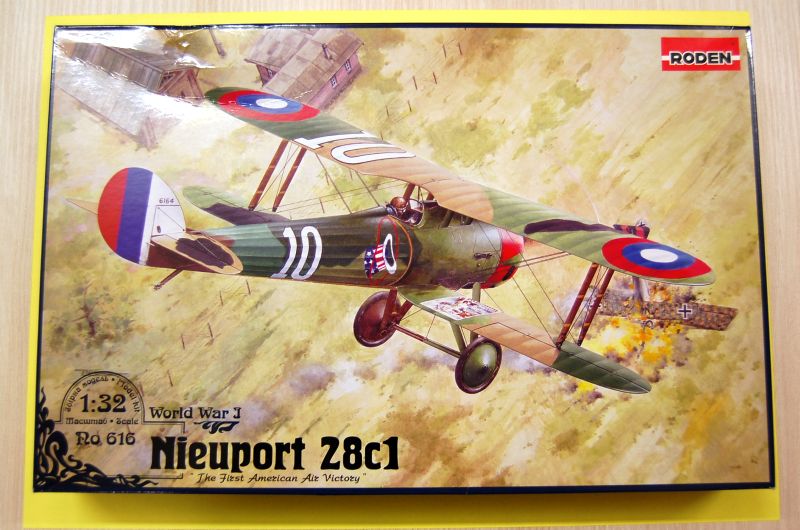Hi guys,
after a long, long time, I'm back again.

So, after my "maritime" phase with Pearl Harbor is finished, and the Ray / Missile-Driven Division is now ready, I thought I could return to the childhood days of the military flight. I had already started with the "Ninak", but this site is closed for the time being, because I want to start some tests on some other models, before I even use them with the Ninak (the kit is just too expensive for me to go wild To experiment). Here is a somewhat slimmed down building report on the Nieuport.

The kit is from Roden in 1/32 scale. Since relatively few components (56) are available, and the detailing is also worth improving, so the perfect model for trials. The first thing I did was the cockpit. Normally, you paint a large part of the components before the assembly, but you should cancel it for later. And for a simple reason. All parts are glued "dull", since Rodentypically hardly any travel aids (bores / pins) are present. This makes these kits for beginners not exactly "user-friendly". After the parts were dry, the scaffold was glued and painted in a light wood tone. The seat was repaired because Roden offers here only a simple seat shell, which looks more like from the 2. world war. Here I have a basket netting, which does not look quite like the original, but fully fulfills my ideas.
Furthermore, various bowden cables and tension wires were installed. Also, I've used seat belts from Eduard, since Roden does not offer (even times apprehension).
We continue with the engine. Again, there is still a lot to be improved, even if one later by the engine cover hardly sees anything.
Thus, the cooling fins were carefully recessed, second spark plugs fitted (the engine had already two spark plugs per cylinder to compensate for a failure), and the corresponding ignition cables laid. Lacquered in iron, aluminum and metalic-black.
The bonnet was completed by a rivet row.
Now I have devoted myself to the most foolish thing. The tension wires. Since the French, as well as the German aircraft, used round tension wires, it was obvious for me to make these wires myself, since I do not like the use of yarn. I made the wires from 0.03 and 0.1 mm copper wire. The sleeves are made of 1 mm brass tube.
Since the transverse side and height rudders are unfortunately not available individually, these were carefully cut with a scalpel, and re-attached with pins.
Since the wing struts are indeed a very delicate matter, as far as attaching (tacking), the paint finish was finished so far. On the top of the wing, narrow strips and nails were sculptured in the area of the ribs.
The cockpit, by the way, is pushed completely into the fuselage, and not as usual, glued into one of the trunk halves.
In the current state, the middle panels are glued to the fuselage and also the bracing is finished so far in this area. The tensioning ropes are turned again, this time with a diameter of 0.05mm. The sleeves are made of carbon with an inside diameter of 0.07mm. For comparison, I have placed a pin on the last photo.
That would be it for the moment. (Sorry for the translation, it's Google-Translate

)
Jürgen